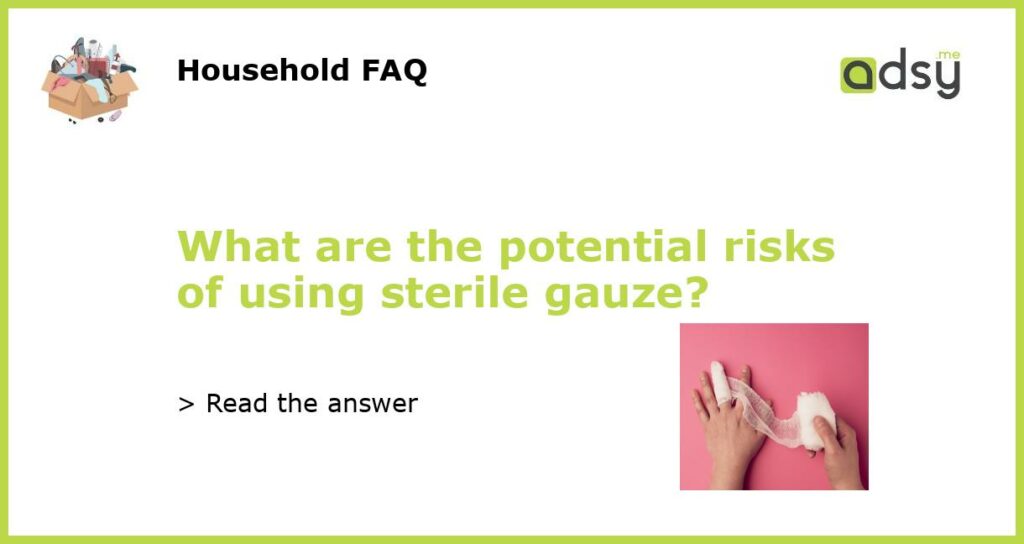Understanding the Potential Risks of Using Sterile Gauze
Sterile gauze is a commonly used medical supply that plays a crucial role in wound care. It is used to clean and dress wounds, absorb excess fluids, and promote healing. However, while sterile gauze is generally safe and effective when used properly, there are potential risks associated with its use that need to be considered.
Risk of Contamination
Sterile gauze is supposed to be free from any microorganisms, ensuring a clean environment for wound healing. However, there is still a risk of contamination. If sterile gauze is mishandled or improperly stored, it can become contaminated with bacteria, fungi, or other pathogens. This can lead to infections when the contaminated gauze is applied to a wound. It is essential for healthcare professionals to follow strict protocols for handling and storing sterile gauze to minimize the risk of contamination.
Allergic Reactions
While sterile gauze is designed to be hypoallergenic, there is still a risk of allergic reactions in some individuals. Gauze is typically made from natural fibers such as cotton, which can contain residue from pesticides, dyes, or other chemicals used in the manufacturing process. These residual substances can potentially cause skin reactions, such as itching, redness, or rashes, in individuals with sensitive skin or allergies. Additionally, some people may be allergic to certain materials used in the sterilization process, such as ethylene oxide. It is important for healthcare providers to take a patient’s medical history and potential allergies into account when selecting and applying sterile gauze.
Delayed Healing
Using sterile gauze for wound care is generally beneficial for promoting healing. However, in certain cases, the use of gauze dressings can hinder the healing process. If gauze is not changed frequently enough, it can stick to the wound, causing trauma and disrupting the growth of new tissue. This can lead to delayed healing and potentially increase the risk of infection. Additionally, if gauze is applied too tightly or is not breathable, it can create a moist environment that is conducive to bacterial growth and can impede the healing process. Careful monitoring and assessment of the wound and appropriate selection of dressings are crucial to prevent these complications.
Adverse Interactions with Medications
When sterile gauze is used in conjunction with certain medications, there is a potential risk of adverse interactions. For example, some antimicrobial ointments or creams can be absorbed by the gauze, reducing their effectiveness. Similarly, certain gauze dressings may interact with medications that promote wound healing, such as tissue-engineered products or growth factors. These interactions can hinder the desired therapeutic effects and compromise the overall effectiveness of the treatment. It is important for healthcare professionals to consider the type of medication being used and its compatibility with gauze dressings to avoid any potential risks or complications.






